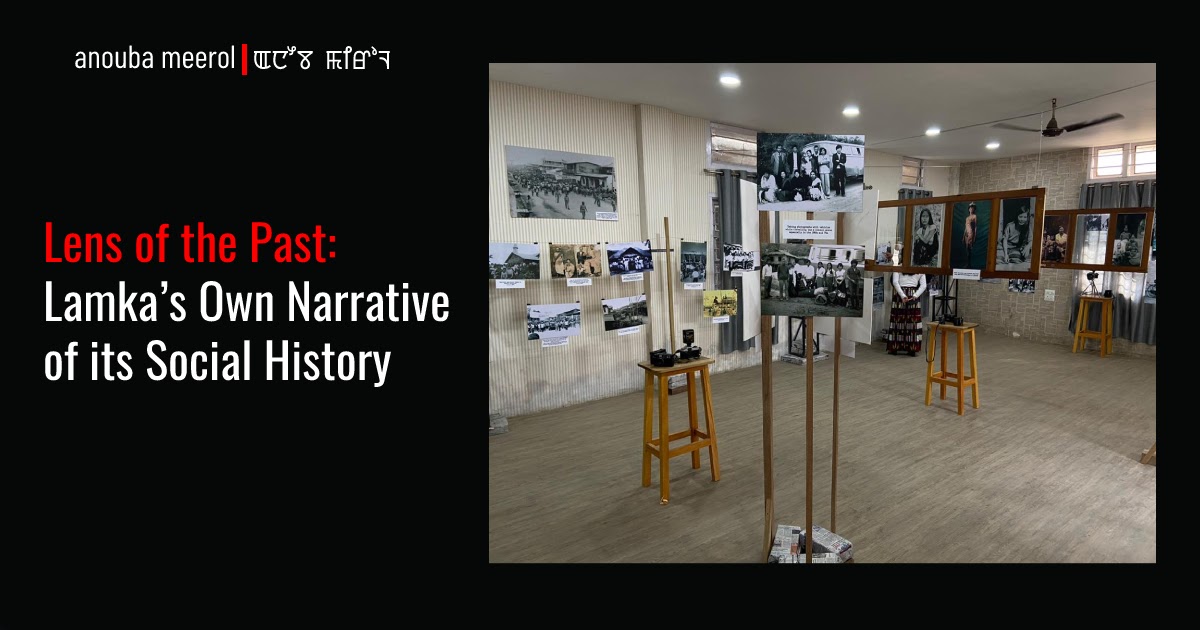Recently, a photo exhibition titled “The Town Between The Hills” was held at the District Library in Lamka, Churachandpur from the 8th of April to the 10th of April, 2021. This exhibition was organised by ‘This Is Lamka’ in collaboration with Zogam Tribal Museum, Highland Group and NEST Lamka, and supported by British Council. One of the lead organisers, Dennis Lallienzuol, scholar and indigenous activist, told us that this photo exhibition is the first of its kind with an attempt to narrate the visual history of Lamka town.
The attempt is to explore what it was like to live in Lamka in the 20th century. He said that if we visit the Manipur State Archives to look for photos which can narrate our history, we only have photos of mostly the rulers of Manipur and the photos taken through the lenses of colonial ethnographers. But we hardly have photos of how people used to live, their religious practices, their music, the cinema they enjoyed and all those things which historians have often ignored in their history writings. The attempt is to present a micro history of the town of Lamka through the photos captured and treasured by the people of Lamka themselves.
Dennis Lallienzuol posing in front of the photo of Pu Zenhang Valte and his family. The Chief’s family wore Khamen Chatpa gifted by the Meitei King.
The organisers said that the attempt is not just to exhibit these photographs but to develop a repository of the photos pertaining to the town. It is required because often people discard their photographs unknowingly, some of them were lost when they moved or due to different calamities such as fire and floods.
Dennis Lallienzuol told us that gathering the photos for the exhibition was quite a challenge as many people whom they had approached did not maintain them properly. He and his associates, for three months, went around convincing people who had the old photographs to contribute. Sometimes people find it difficult to part with their photos as these photographs are their cherished memories. Many shared memories and stories behind various photographs. While some photographs tell overtly political stories of the chiefs and Indian state officials, some tell very personal stories with larger political implications, such as the photograph of a young boy going to a boarding school while bidding farewell to his sisters. Moreover, these old photos are prized possession because people had to send them to Kolkata to develop these photos. After that, the technology came to Imphal and then to Lamka. In the course of collecting these photographs, soon after the word went rounds, Lallienzuol and his colleagues also found contributors who wanted to share their photographs. Thus came along the exhibition.
A boy going to boarding school in the 1960s
In the exhibition, the photos were organised in eight different sections. The first section narrates the story of those in Lamka who converted to christainty in the first half of the 20th century and their struggle against Tyagi Bill, an attempt to forbid their conversion to Christianity. The second section talks about the making of the town from twin villages, Hiangtam Lamka and Zenhang Lamka . The third section and the fourth section shows the coming of the Indian state to Lamka and the Lamka’s people visiting the capital of the Indian state. These two sections narrates how the project of India’s national integration played out in Lamka. The photos in these sections consist of Jawaharlal Nehru, Indira Gandhi and many other politicians from the mainland visiting and mingling with the people of Lamka.
First Miss Churachandpur 1985-86, Rebec Siemlien (the middle one)
The rest deals with the coming of modernity, the three piece suits, the beauty peasants, the women wearing bikinis, the style, the cinema and the rock music, what Dennis Lallienzuol calls the “golden days” of Lamka, before the drugs, conflict and violence.
Overall, the photos present an exciting tour of the history of Lamka, the challenge of the colonial projects that people of Lamka face who were learning to live with it and at times resisting it. Dennis Lallienzuol is hopeful that this project will grow and more people will not just contribute more photos but moving pictures and the cultural objects that can tell the story of everyday history of the people of Lamka.
